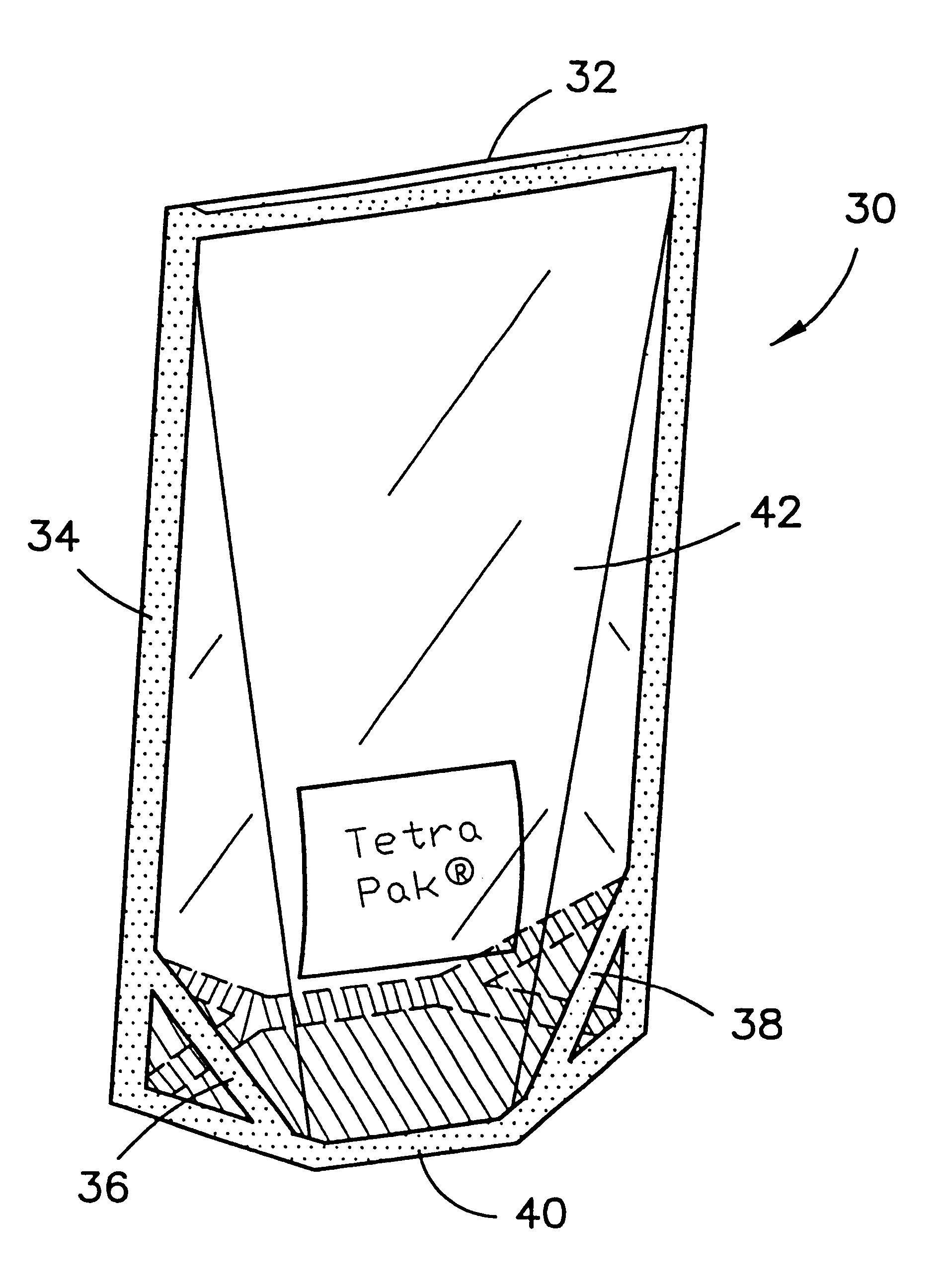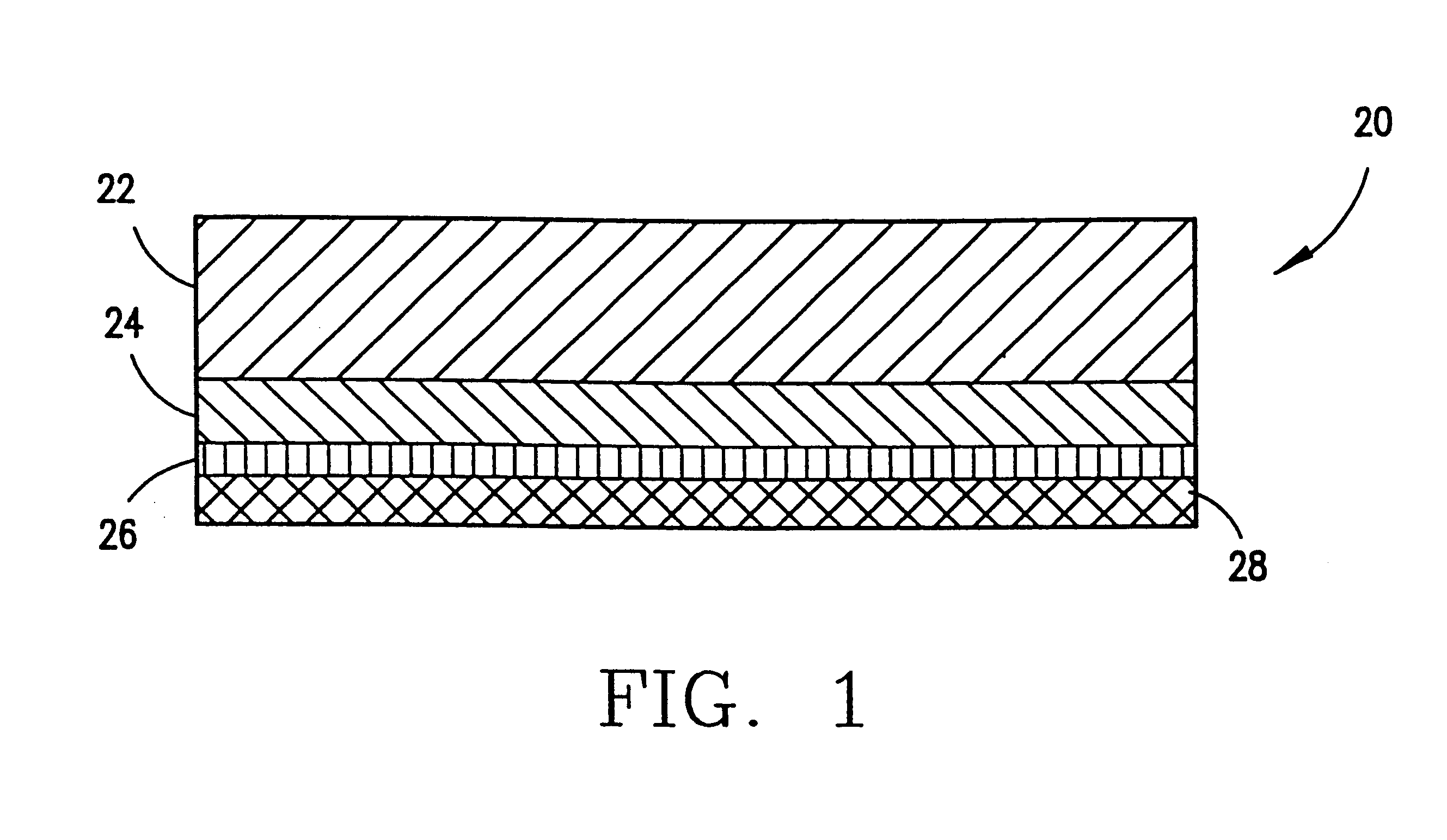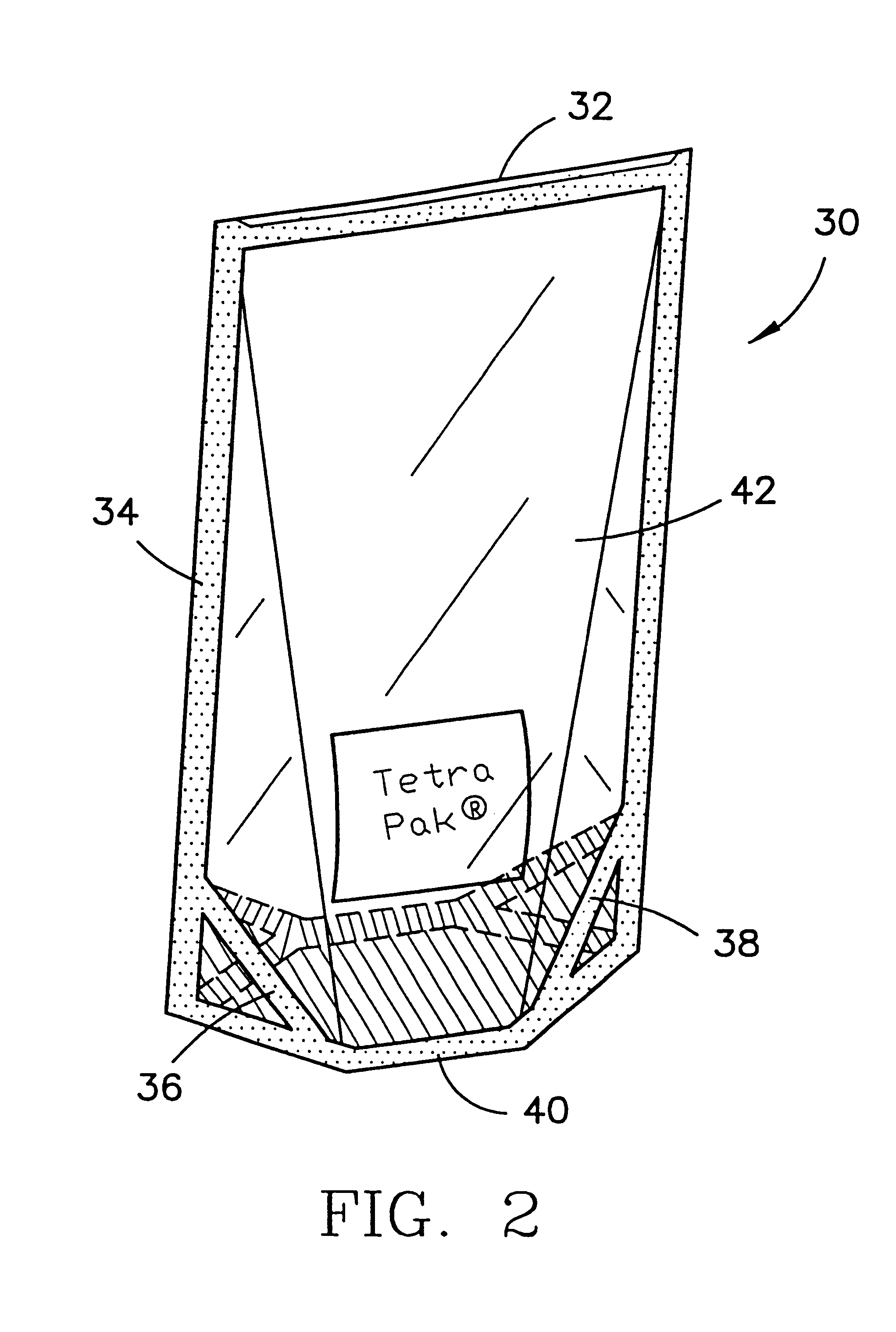Transparent high barrier multilayer structure
a multi-layer structure, transparent technology, applied in the direction of container/bottle construction, rigid containers, record information storage, etc., can solve the problems of virtually no sio.sub.2 barrier properties, limited use of sio.sub.2, and foregoing patents, although effective in protecting contents, are not denouemen
- Summary
- Abstract
- Description
- Claims
- Application Information
AI Technical Summary
Problems solved by technology
Method used
Image
Examples
example two
TABLE FOUR METRIC (SI) ENGLISH PROPERTY TEST UNITS VALUE UNITS VALUE O2 ASTM cc / m.sup.2 24 hr cc / 100 Permeation D3985 (23.degree. C. ,50% RH) 4.3 in.sup.2 / 24 hr 0.28 (23.degree. C. ,90% RH) 4.3 0.28
The ASTM D3985 test method covers a procedure for determination of the steady-state rate of transmission of oxygen gas through plastic films. The oxygen transmission rate is defined as the quantity of oxygen gas passing through a unit area of the parallel surfaces of a plastic film per unit time under the conditions of the D3985 test method.
The first step in the oxygen gas transmission test is to equilibrate the flexible barrier material in a dry environment (relative humidity less than 1%). The flexible barrier material is placed between two chambers at ambient atmospheric pressure. One chamber contains oxygen while the other is slowly purged by a stream of nitrogen. As oxygen gas permeates through the barrier material into the nitrogen chamber, the oxygen gas is transported to a coulom...
example three
TABLE FIVE METRIC PROP- (SI) VAL- ENGLISH ERTY TEST UNITS UE UNITS VALUE GELBO F392 cc / m.sup.2 24 hr cc / 100 FLEX: (23.degree. C. ,75% RH) in.sup.2 / 24 hr Cycles 0 4.3 0.28 25 4.7 0.30 50 5.3 0.34 100 5.8 0.37
ASTM test method F392 is the standard test method for the flex durability of a flexible material. This test method covers the determination of the flex resistance of flexible barrier materials. Pinhole formation is the criterion presented for measuring failure, however other tests such as gas-transmission may be used as a substitute or complement to this test. Table Five illustrates the results from an oxygen permeation test to determine the flex resistance of the flexible barrier material.
In conducting the test, the flexible barrier material is flexed at standard atmospheric conditions. The flexing conditions and number of severity of flexing strokes may vary. The flexible barrier material of Table One was subjected to cycles of 25, 50 and 100. The flexing action consists of a ...
example four
TABLE SIX METRIC (SI) ENGLISH PROPERTY UNITS VALUE UNITS VALUE ELONGATION AT BREAK MD % 160 MD % 160 TD % 230 TD % 230 TENSILE MD MPa 32 MD Kpsi 4.7 STRENGTH AT TD MPa 28 TD Kpsi 4.1 BREAK TENSILE Kpsi 135 MPa 925 MODULUS
Table Six provides the results of the tensile properties under ASTM D882 for the flexible barrier material of table one. The tensile properties tested by this test provide information on the tensile modulus, the tensile energy to break and the tensile strength of the flexible barrier material. The tensile modulus of elasticity is an index of the stiffness of the plastic. The tensile energy to break is the total energy absorbed per unit volume of the material up to the point of rupture.
PUM
| Property | Measurement | Unit |
|---|---|---|
| thickness | aaaaa | aaaaa |
| thickness | aaaaa | aaaaa |
| thickness | aaaaa | aaaaa |
Abstract
Description
Claims
Application Information
 Login to View More
Login to View More - R&D
- Intellectual Property
- Life Sciences
- Materials
- Tech Scout
- Unparalleled Data Quality
- Higher Quality Content
- 60% Fewer Hallucinations
Browse by: Latest US Patents, China's latest patents, Technical Efficacy Thesaurus, Application Domain, Technology Topic, Popular Technical Reports.
© 2025 PatSnap. All rights reserved.Legal|Privacy policy|Modern Slavery Act Transparency Statement|Sitemap|About US| Contact US: help@patsnap.com



